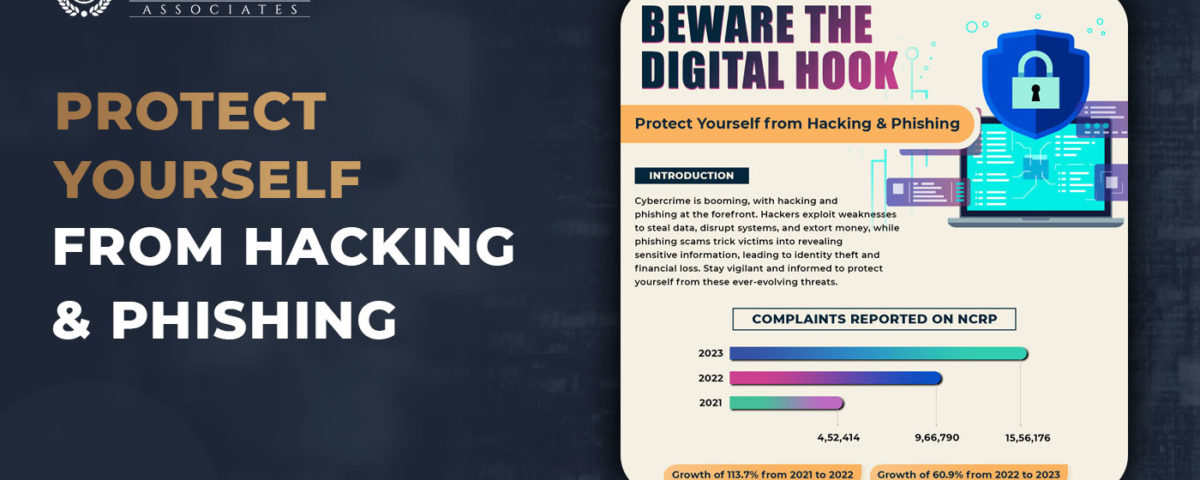
Case Study: Shreya Singhal Vs Union Of India (AIR 2015 SC 1523)
March 27, 2024In an era where technology is deeply intertwined with our daily lives, the threat of cybercrime looms larger than ever. Hacking and phishing, two prevalent forms of cyber attacks, have seen a staggering rise in recent years, posing significant risks to individuals and organizations alike. To navigate the digital landscape safely, it’s crucial to understand these threats and take proactive measures to protect ourselves.
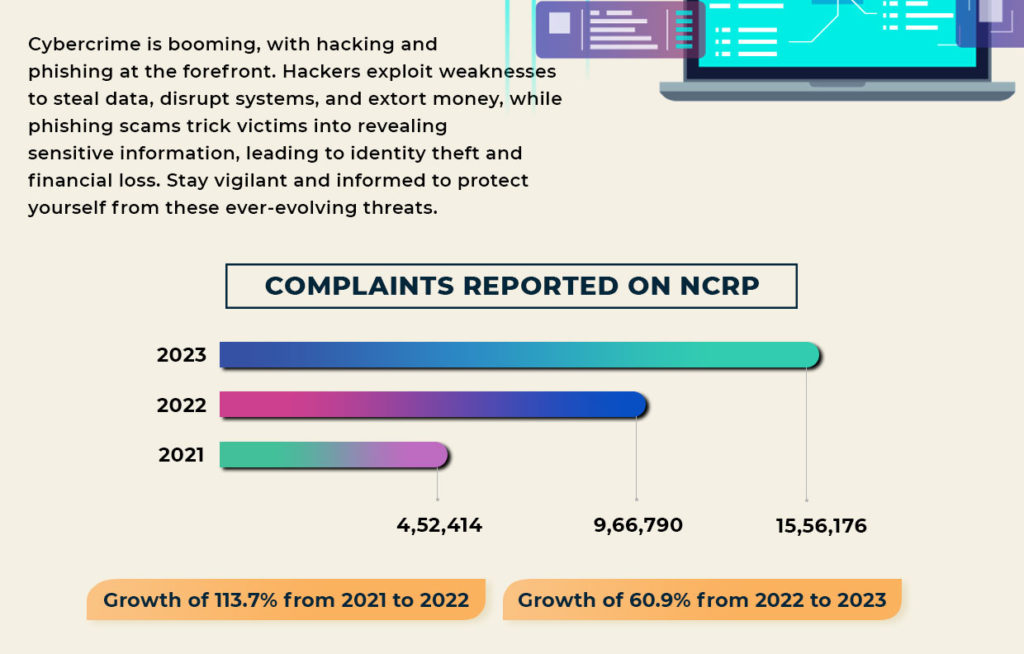
Understanding Hacking
Hacking, the unauthorized access to computer systems or networks, comes in various forms, perpetrated by individuals with different motivations. White Hat hackers, often employed by organizations, use their skills to identify and fix security vulnerabilities. In contrast, Black Hat hackers exploit weaknesses for malicious purposes, while Grey Hat hackers fall somewhere in between. Common hacking techniques include brute force attacks, where attackers systematically guess passwords until they gain access, SQL injection, which involves manipulating databases to extract information, and Cross-site scripting (XSS), which exploits vulnerabilities in web applications.
Spotting Phishing Attempts
Phishing, on the other hand, involves fraudulent attempts to obtain sensitive information such as passwords, credit card numbers, or personal data. These attacks often come in the form of deceptive emails that appear to be from legitimate sources. Signs of phishing emails include a sense of urgency, spelling and grammar errors, and suspicious links or attachments. Attackers may impersonate trusted organizations or create fake login pages to trick unsuspecting victims into divulging their credentials.
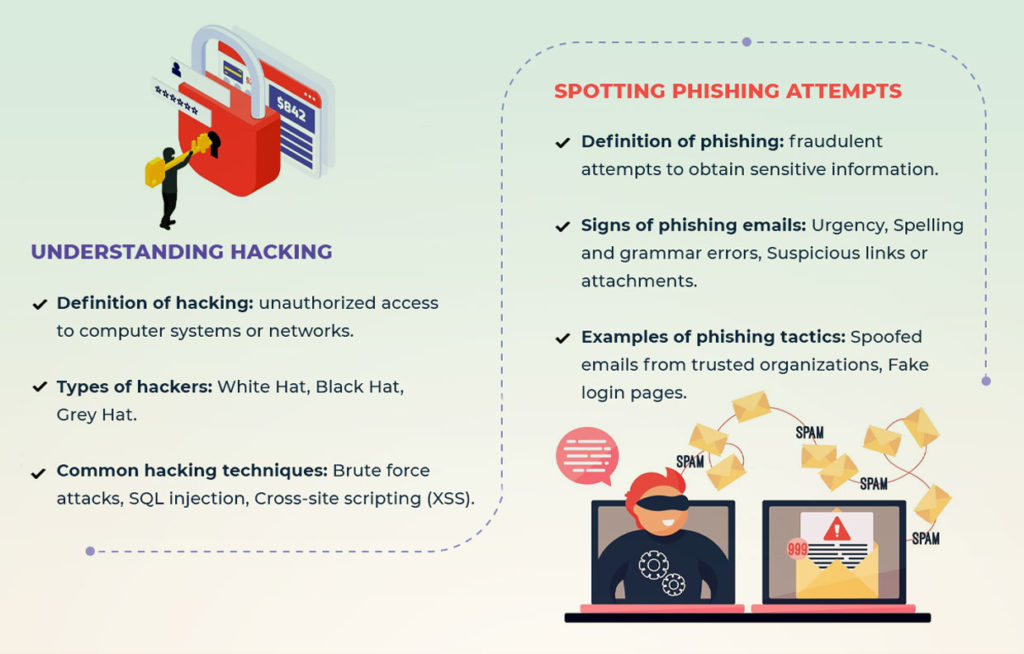
Impact of Cybercrime
The consequences of falling victim to hacking or phishing can be devastating. Financial losses resulting from data theft, identity theft, or unauthorized transactions can cripple individuals and businesses alike. Beyond monetary damages, cyber attacks can inflict severe reputational harm, eroding trust in organizations and tarnishing brands. Moreover, the legal ramifications of cybercrime can be significant, leading to fines, lawsuits, and regulatory penalties.
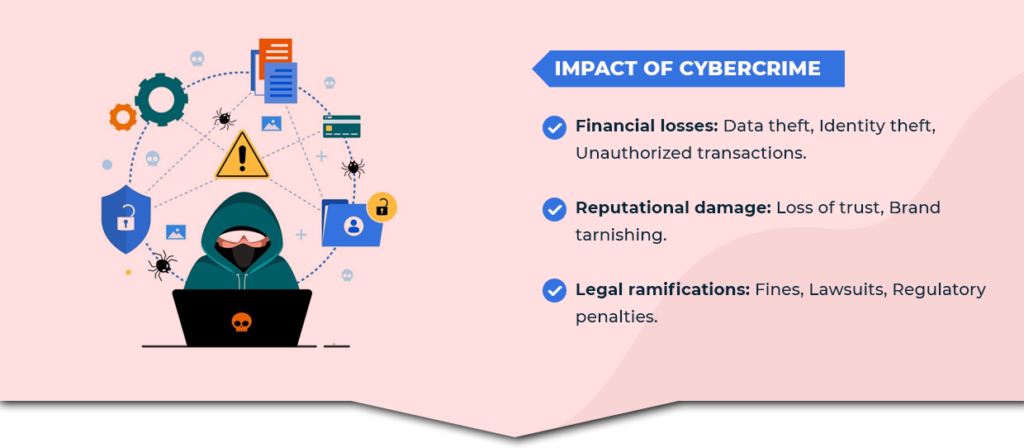
Protecting Yourself From Cybercrime
To safeguard against these threats, it’s essential to adopt robust cybersecurity measures:
- Strong Passwords: Use complex, unique passwords for each account and consider utilizing a password manager for added security.
- Two-Factor Authentication (2FA): Enable 2FA wherever possible to add an extra layer of protection to your accounts.
- Phishing Awareness Training: Educate yourself and your employees about the telltale signs of phishing attempts to avoid falling prey to these scams.
Securing Your Devices
In addition to safeguarding your accounts, it’s crucial to secure your devices:
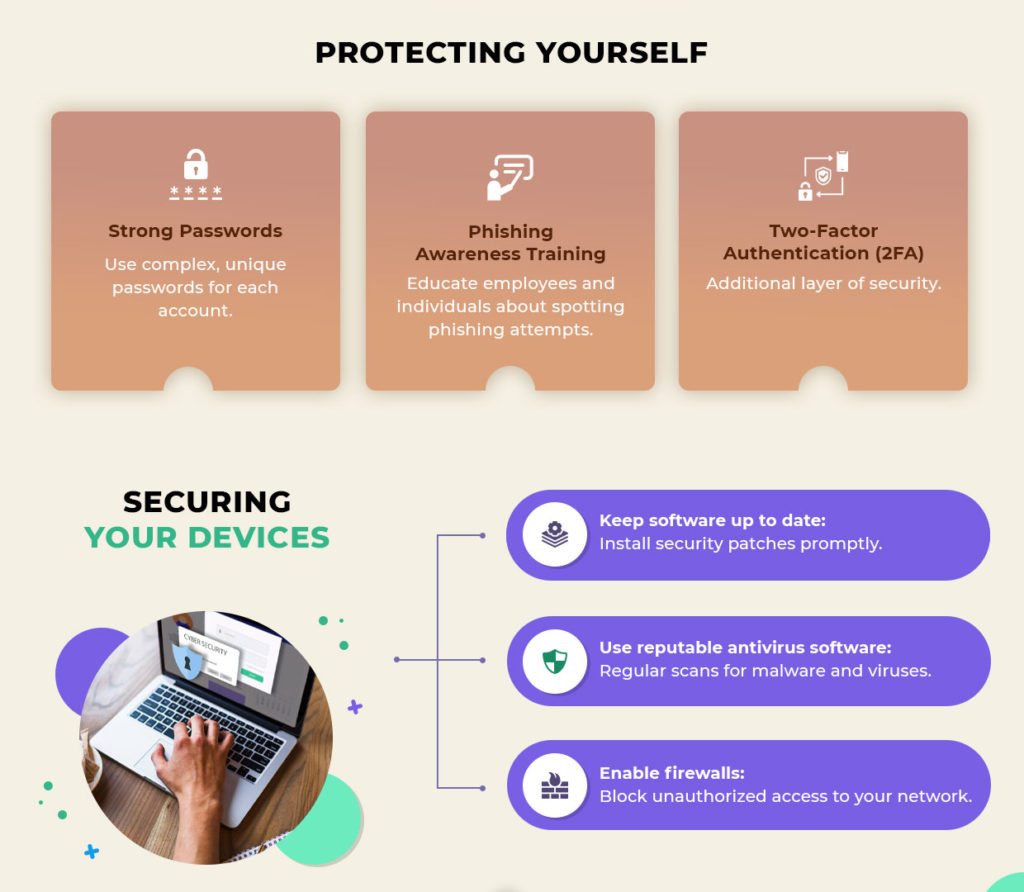
Safe Online Practices To Avoid Cybercrime
Finally, practice safe online habits to minimize your risk exposure:
- Verify Sources: Double-check the authenticity of email sender addresses and URLs before clicking on any links or downloading attachments.
- Don’t Overshare: Be cautious about sharing personal or sensitive information online, particularly on social media platforms.
- Report Suspicious Activity: If you encounter any suspicious or fraudulent activity, notify your IT department or relevant authorities immediately to take appropriate action.
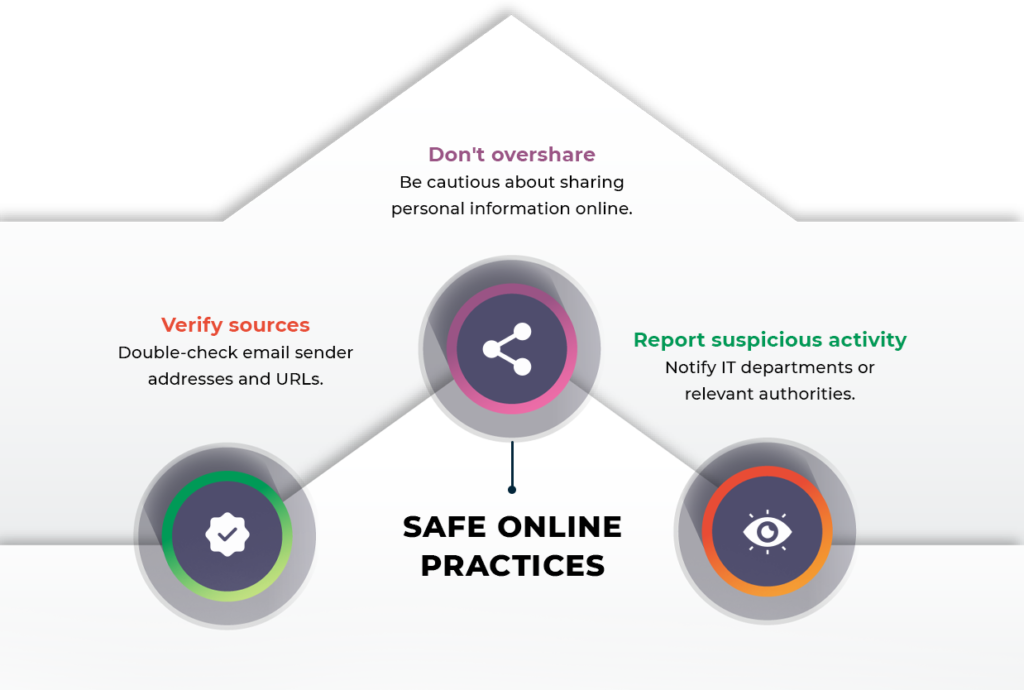
Stay Vigilant & Report Cybercrime Incidents
In conclusion, staying vigilant and informed is key to protecting yourself from the ever-evolving threats of hacking and phishing. By implementing robust cybersecurity measures, securing your devices, practicing safe online habits, and reporting any suspicious activity promptly, you can minimize your risk exposure and navigate the digital landscape safely.
Legal Resources
For legal guidance and assistance related to cybercrime, you can refer to resources such as the official government portal on cybercrime (https://cybercrime.gov.in/) or connect with cybercrime lawyers or legal experts for the right guidance (https://finlawassociates.com/). However, it’s important to note that the information provided in this infographic is for informational purposes only and does not constitute legal advice.
Sources
The data presented in this infographic is sourced from official sources such as Crime in India reports and government portals, ensuring accuracy and reliability.
Disclaimer
It’s important to remember that the information provided in this infographic is for informational purposes only and does not constitute legal advice. Individuals and organizations should seek professional legal counsel for specific guidance and assistance related to cybercrime matters.

